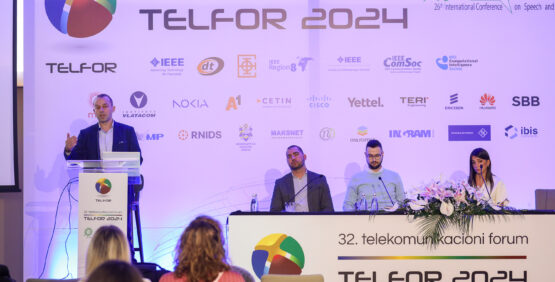
Keep Mario Moving!
July 31, 2020
Who would have thought 25 years ago that today’s Mobile Network Operators (MNOs) customer service centres would be getting calls from an 8-year-old and grandma complaining that they don’t have enough throughput to watch 4K Netflix? Well, be prepared because in the years to come grandma will be calling again demanding better latency because she can’t get Mario to move when she wants him to!
As it is well known today, the rise of new metrics and use cases that assess the customer experience has gained more and more traction within MNOs.
Today customer requirements regarding service interruption, especially in gaming environments as well as in video conferencing, live streaming and other critical delay sensitive applications, made low latency and packet loss as important as having high throughputs.
MNOs are now concerned how long users are having to wait for a video to be buffered and how often re-buffering is occurring, and at the same time paying extra attention to the UE’s battery consumption. Another aspect that is currently on many operator’s agenda is the ability to achieve OPEX savings through power saving features and proprietary solutions like Aspire’s Energy Efficiency solution.
So, it comes as no surprise that these types of network (NW) insights forced MNOs to move away from the standard KPI checks and turned more into insightful Drive Test data analysis, crowd-sourcing and in-app data collection.
Complexity of current LTE NWs and future LTE/5G Networks
The ever-growing complexity of managing a NW with multiple LTE Bands and Carriers, and in some cases multi-mode (FDD + TDD), is challenging MNOs. Their aim is to attain the best possible configuration of their NW’s Mobility Strategy, in order to fulfill the new customer experience demands.
Placing the UEs in the best band, carrier or mode at a given place and time aiming to provide the best possible experience, is proving to be a challenge. Plus, if put together with the quick traffic profile changes seen nowadays (example of the COVID-19 new era), the complexity of such operations becomes even greater.
RAN Latency & Packet Loss and Seamless Technology transitions
RAN Latency and Packet Loss in LTE are highly dependent on the PDCP/RLC buffer performance, either on the eNodeB (Downlink) or the UE (Uplink) side. If the buffer is filled up quickly packets will get discarded due to buffer overload and/or the discard timer is expired, meaning that the packet as reached the maximum configured time in the queue waiting for transmission. In many cases, we have seen that these are the main causes of RAN Packet Loss, especially for the most delay sensitive QCIs.
This behavior is tightly connected with the latency performance once packets arrive at the eNodeB and are ready to be sent to the UE. If the buffer is experiencing high congestion rates, the packets take longer to arrive to the UE having a direct impact in customer experience.
Unlike 5G, where the option of having larger sub-carrier spacing−which allows for significant latency performance improvements−can be a solution, in LTE the sub-carrier spacing is fixed (at 15 kHz) therefore making that much critical a good flow of data through the eNodeB’s PDCP/RLC buffer.
Seamless technology transitions aim at no service interruption when moving from 5G/LTE to Legacy technologies and is also an aspect of NW performance that directly impacts customer experience. Presently and even more in the future when 5G comes in full force, customers will be more demanding when it comes to a user experience with no noticeable QoE (Quality of Experience) impact. Once again, the correct approach when configuring a Mobility Strategy will be crucial in successfully overcoming all these challenges.
We can already see the shift in mindset and notice MNOs focusing on new monthly plan offerings that move away from a throughput centric view to a latency one. Instead of choosing the maximum throughput for which customers are willing to pay for we will start to see offerings guaranteeing minimum latency performance. At a recent live-cast from the Mobile Video Industry Council (MOVIC), operators mentioned that they believe that a Latency and Packet Loss sensitive service such as cloud gaming could represent 25% to 50% of 5G data traffic by 2022.
Mobility Strategy Management
At Aspire we have determined that the right Mobility Strategy and right set of configurations responsible for allowing UEs to be “placed” in the best possible band at a given time, while simultaneously ensuring the correct balance of the NW’s multiple layers, are Key in achieving the above.
It is no longer enough to merely “stretch” the NW boundaries in LTE to retain as much users as possible, MNOs now have to ensure this but also make sure that the performance is not affected and that users do not perceive their experience negatively impacted.
Aspire helps several customers to arrive at the best possible strategy by introducing a specific combination of both Level and Quality (RSRP and/or RSRQ) threshold triggers, to perform Inter-Frequency Handovers between Bands/Carriers/Modes.
The complexity of arriving to an optimal configuration depends on items such as: total number of bands, number of high bands vs low bands, bandwidth, interference levels within each band, CA-capable bands, prevention of users from being in very low RSRP values in High Bands in order to avoid missed paging messages for CSFB calls, Power Savings efficiency,…)
Also not to be overlooked is the reduction of the % of time that UEs spend performing measurements to transit between the several available Bands, as that carries a significant negative impact in the achievement of higher throughput and lower latency levels as well as putting a higher strain in the UE’s battery directly affecting it’s consumption.
Aspire as long recognized the underlying value and how critical it is to have the right experience and know-how to properly manage a NW Mobility Strategy. Combining our expertise with our suite of both Analytic and ML based tools provides us with the ability to apply improved NW quality standards across all vendors and technologies including new O-RAN players.
If you’re interested in knowing more on how we propose to achieve this and how to get Donkey Kong to keep moving, drop me an e-mail: goncalo.gomes@aspiretechnology.com.






